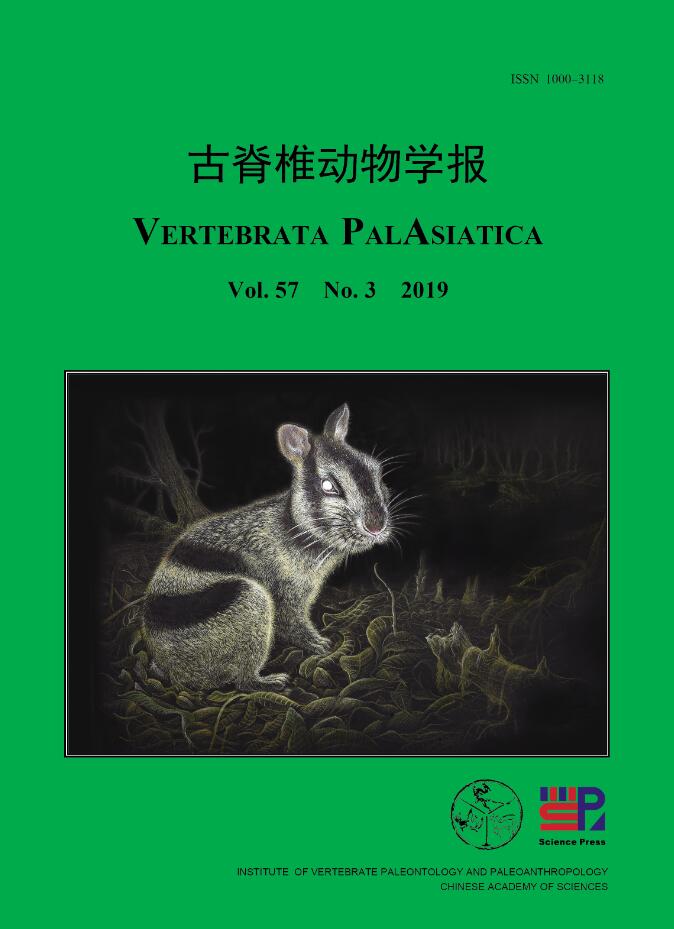

封面说明:长褶苏门答腊兔(Nesolagus longisinuosus)的生态复原图。该种是苏门答腊兔的第二个化石种,发现于中国西南云南省禄丰和昭通两个晚中新世地点,根据伴生动物群和植物群判断,其栖息环境都是潮湿的沼泽地。苏门答腊兔的现生种类通称条纹兔,仅分布于东南亚的热带丛林中,是一种夜行性的动物。图中是一个夜晚沼泽地场景,远处池塘边影影绰绰可见一些倒伏的树。复原的长褶苏门答腊兔长有一对短耳,身上具有数条深色条纹。可能因为听到了某种异响,这只蹲在落叶中的兔子处于一种警觉的状态。详见Flynn等人文(p. 214)。 (绘图:郭肖聪)
Cover image: Ecological reconstruction of Nesolagus longisinuosus. It is the second extinct species of the genus Nesolagus, and has been recorded from the Late Miocene Lufeng and Zhaotong localities in Yunnan Province, southwestern China. Judging by the co-occurring mammalian fauna and flora, its habitat should be a wet swamp. Being known as “striped rabbit”, the extant Nesolagus is restricted in the tropical forests in Southeast Asia, and is a nocturnal animal. In this painting, the background is a swampy scene in the night that there are a few fallen trees by the pond in shadowy outlines. Reconstructed N. longisinuosus has a pair of short ears and several dark stripes on the back. This kitten is squatting in the fallen leaves because some odd noise aroused its vigilance. See details in the paper of Flynn et al. (p. 214 ) (Illustrated by GUO Xiao-Cong)